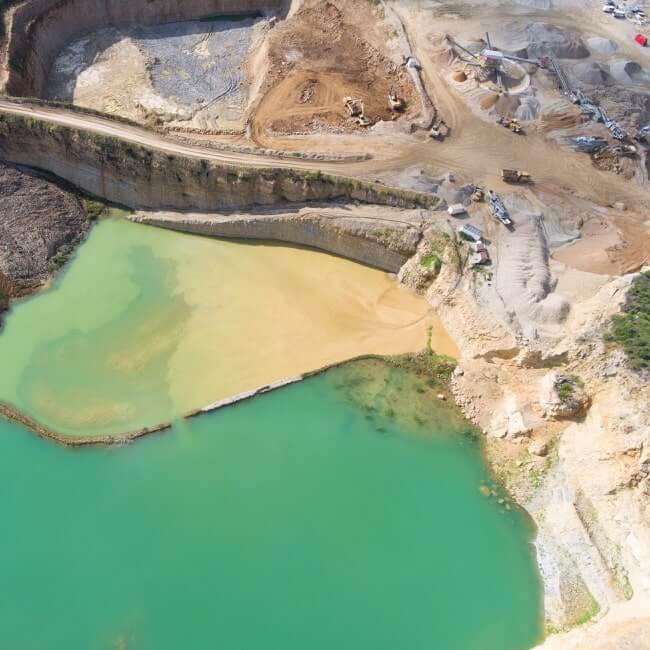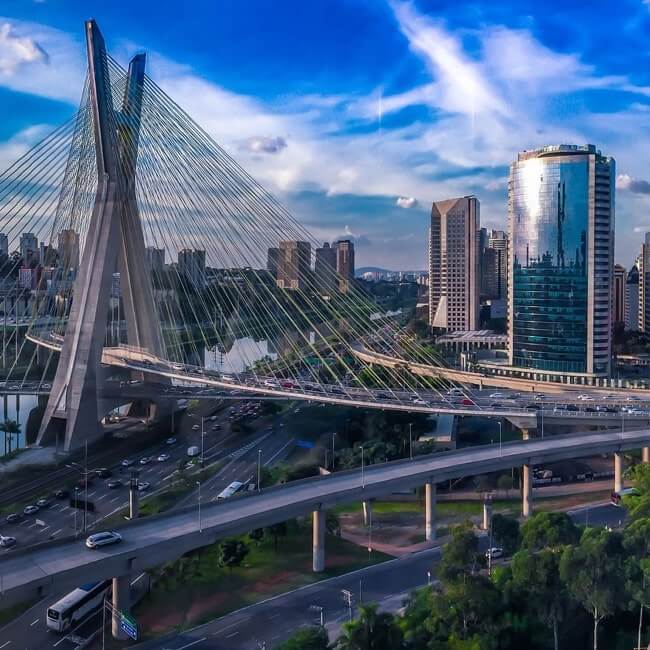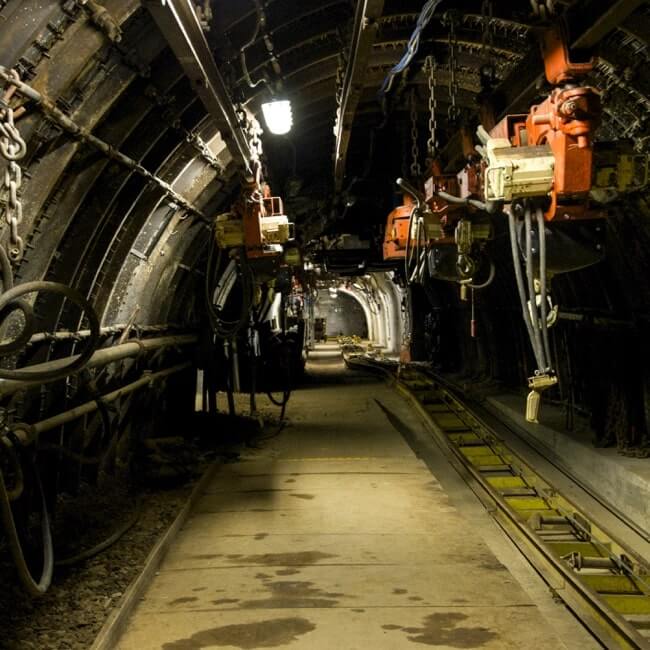Chile’s political seesaw: Regional elections hint at a balancing act for 2025

The results of Chile’s regional governor elections reveal a political map that leans toward independent leaders, albeit often supported by the major political forces, as well as a growing opposition in the lead-up to the 2025 presidential elections.
Of the 16 regions of the country, candidates backed by or affiliated with the ruling coalition won in 10, while representatives of the opposition were elected in six. This was a significant shift from 2021, when only one region elected a right-wing candidate.
Moreover, when factoring in the composition of municipal councils, mayoralties and regional councils, the scales tip toward the opposition.
While most of the country's mining regions will be led by governors aligned with the current center-left administration, several political figures are already drawing up their strategies for the presidential primaries set to take place in June next year.
BNamericas talks to Miguel Ángel Fernández, doctor in political science and academic deputy director of political-social research at Universidad del Desarrollo (UDD), to find out more about the political landscape and its implications for the mining industry.
BNamericas: To what do you attribute the close electoral split between the ruling coalition and the opposition in the November 24 regional governor elections?
Fernández: The data shows the vote was split between the two blocs, with the opposition [including Republicans and Chile Vamos] capturing 50% of the vote, the ruling coalition 47%, and independents 3%. This balance might be related to mistakes by the current government, divisions within the opposition and the fragmentation of the party system.
The overall results reflect a decline in electoral support for the ruling coalition compared with the 2021 elections. After this year’s electoral process, the composition of municipal councils, regional councils, mayoralties and governorships suggests a political moment that is more favorable to the opposition heading into 2025.
BNamericas: Do you think the recent election results hint at future voting behavior in Chile’s next presidential election?
Fernández: The results suggest a shift toward greater electoral balance between the forces of Chile’s traditional regime and those that gained momentum after the 2019 social unrest.
At the same time, the decline in support for the ruling coalition and the increased representation of right-wing and independent parties indicate attrition affecting the current government and growing disillusionment with the governing bloc. These dynamics will shape the presidential elections, pointing to an advantage for the opposition. However, this advantage won’t necessarily translate into greater parliamentary power, as that will depend on alliances and unity to capitalize on current electoral trends.
In the recent runoff elections for regional governors, candidates with more moderate public stances tended to win. While this doesn’t necessarily imply programmatic moderation, it highlights the importance of tone and political style in swaying voters.
BNamericas: In key mining regions in northern Chile – like Tarapacá, Antofagasta and Atacama – independent governors with left-leaning political backgrounds were reelected. What are your expectations for mining development under their leadership?
Fernández: The election of independent candidates with ties to left-wing parties in several mining regions reflects a trend toward local leadership that distances itself from the original political project of President [Gabriel] Boric’s administration. It also responds to a growing need for candidates who are more directly connected with regional concerns.
The elected governors are likely to support policies promoting mining development, though with a more regulatory approach that balances community and environmental considerations. This will stem not only from who governs the region but also from the composition of the regional councils.
In Tarapacá, Antofagasta and Atacama, the governors’ left-leaning political backgrounds could mean a less investment-friendly stance in some cases. However, they will face pressure from an increased number of opposition councilors, which could create tension or foster agreements to advance new projects and strategic agendas.
BNamericas: How might the decisions and policies of regional governors impact investment attraction and local project development?
Fernández: Regional governors have a significant influence. As the highest authorities in their regions, they can set development priorities and advocate for investment projects. This role will be even more pronounced with the new electoral dynamics, with voter turnout exceeding 83% of those eligible nationwide – marking a stark contrast to the roughly 20% turnout in previous runoff elections before mandatory voting was implemented in late 2022.
Additionally, growing public dissatisfaction with Chile’s stagnant economy and increasing demands for jobs and opportunities are coming to the forefront in some regions. Each region faces unique challenges, but places like Biobío – hit by the closure of the Huachipato [steel] plant – will see their governors play a key role in driving investment agendas and attracting new capital to revitalize local economies.
BNamericas: In a time of insecurity and rising crime indices in Chile, do you see the potential for strong, confrontational leaders like Argentina’s Javier Milei or Donald Trump to emerge?
Fernández: There’s always a chance that leadership focused on these issues and a forceful narrative could emerge. However, the results also show that Chileans care about political style and tone, which creates a gap between Chile and phenomena like Milei or Trump.
In parliamentary elections, confrontational figures might have greater impact due to the nature of the electoral rules. But for the presidency, voters are likely to favor a leadership style that, while tough and direct on key issues like crime, maintains decorum and appears more resolute than divisive.
Subscribe to the leading business intelligence platform in Latin America with different tools for Providers, Contractors, Operators, Government, Legal, Financial and Insurance industries.
News in: Political Risk & Macro (Chile)

The SQM-Codelco lithium partnership 'is a necessary experiment for Chile'
BNamericas talks to Mirco Hilgers, mining lawyer at Baker McKenzie in Chile, about the arrangement and Tianqi's problems, and the legal hurdles fac...

Why Chile's economic and environmental crimes law could boost the mining sector
Experts told BNamericas that the law could improve efficiency and attract investors.
Subscribe to Latin America’s most trusted business intelligence platform.
Other projects
Get key information on thousands of projects in Latin America, from current stage, to capex, related companies, key contacts and more.
- Project: Amazon waterway system
- Current stage:

- Updated:
5 hours ago
- Project: Block VIM 33
- Current stage:

- Updated:
2 hours ago
- Project: Juramento 10 wind farm
- Current stage:

- Updated:
5 hours ago
- Project: Termo Sanvicente
- Current stage:

- Updated:
6 hours ago
- Project: Block LLA 87
- Current stage:

- Updated:
2 hours ago
- Project: La Punta wind farm
- Current stage:

- Updated:
5 hours ago
- Project: Gavilán photovoltaic park
- Current stage:

- Updated:
6 hours ago
- Project: Cormorán photovoltaic park
- Current stage:

- Updated:
5 hours ago
- Project: Inti Pacha solar photovoltaic project
- Current stage:

- Updated:
5 hours ago
- Project: Horizonte Wind Farm project modification
- Current stage:

- Updated:
5 hours ago
Other companies in: Political Risk & Macro (Chile)
Get key information on thousands of companies in Latin America, from projects, to contacts, shareholders, related news and more.
- Company: Asociación de Aseguradores de Chile A.G. (AACH)
-
Chilean Insurance Assocation A.G. (AACH) is a non-profit association, comprised of 56 insurance companies, incorporated in 1899 to promote the development and protection of insu...
- Company: Gobierno de la República de Chile





